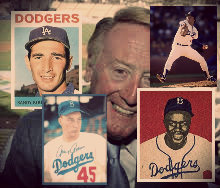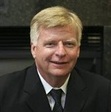L.A. Dodgers: Cursed by Brooklyn or Victims of Own Legend?
The L.A. Dodgers recently spent millions on a stable of thoroughbreds that were sure to catapult the team to the top spot in the National League West above rival San Francisco. Laker basketball legend Magic Johnson led the acquisition of Hanley Ramirez, Josh Beckett, Carl Crawford, Zack Grienke, and Adrian Gonzalez. When current Dodger stars Kershaw, Kemp, and Ethier are added to the list it reads like an all-star team. Before the season began bluefans were twittering about the 2013 Blue’s post season chances.
As of June 1st the last place Dodgers are six games behind the San Francisco Giants.
Hanley Ramirez has been missing at shortstop for most of the season with injuries. Josh Beckett has been an ineffective starting pitcher and may be forced into retirement due to a rare numbness in his fingers. Zack Grienke has been on the disabled list for weeks after an irate Padres’ batter charged him on the mound and broke Grienke’s collarbone. Dodger fans have their fingers crossed as Gonzalez and Crawford are their only productive hitters. Slugger Matt Kemp had never recovered from a shoulder injury last year and has been placed on the disabled list. Their other star hitter, Andre Ethier has been missing in action this year. Starting pitcher Chad Billingsley will likely be out for the year and may require Tommy John surgery.
To understand the Dodgers you have to go back to Brooklyn.
The team became known as the Brooklyn Dodgers in 1932. “Dem Bums” resided at Ebbets Field and apparently got their name from the reputed skill of Brooklyn residents at evading the city’s trolley street cars. They would have never won a world championship had it not been for a young left-handed pitcher, Johnny Podres, who didn’t know any better when to beat the Giants. Prior to the 1955 miracle the Dodgers had awarded the Giants a trip to the world series in 1951 when pitcher Ralph Branca allowed a walk-off home run—“the shot heard round the world”—to Bobby Thompson.
The Dodgers moved to L.A. for the 1958 season and yearned for respectability.
They left all the failed opportunities in Flatbush, or so they thought, winning a world series against the White Sox in ’59. Walter O’Malley built a new stadium at Chavez Ravine that was everything Ebbets Field wasn’t. Emmett the Clown wouldn’t be seen dusting off home plate at Dodger Stadium. The raucous Flatbush fans that had to be swept out of the stadium after the game had been replaced by L.A. fans that left after the seventh inning to avoid the freeway traffic. But it was okay because they listened to legendary announcer Vin Scully on the radio painting a colorful word picture of the end of the game, whether the Blue won or lost.
Neither the Hollywood stars attending the games or the beautiful Dodger Stadium erased the Brooklyn stigma.
Yes, another young lefty, Sandy Koufax, led them to two world championships, against the Yankees and the Twins. But, after Kirk Gibson’s miracle walk-off homer against Oakland’s Dennis Eckersley that led to a championship in the ’88 World Series, the Dodgers have had twenty-five years of high hopes.
Dodgers high hopes have historically been pinned on individuals rather that the team.
The saviors—like budding Hollywood stars—are trotted out every spring. Names like Raul Mondesi, Greg Brock, Darren Dreiford, Kevin Brown, and Manny Ramierez rarely live up to the hype. Like the Brooklyn Dodgers that broke the color line with Jackie Robinson the L.A. Dodgers have always thought outside the [batter’s] box. They have signed players from Japan, Korea, the Dominican Republic, and Mexico. Their most famous acquisition was the Mexican left-handed pitcher, Fernando Valenzuela, who won the Cy Young award in 1981 and led them to a World Series win over the Yankees.
People shake their heads at the term “corporate culture” but baseball’s clubhouses each embody a culture grown out of how management has treated the players over the years, the history of the players and the ball club, and the fans. The Blue clubhouse culture has two added dimensions, which perhaps explain THE DODGERS. Hollywood’s notoriety spills over on the team. Are there many teams whose star centerfielder has dated a famous Pop diva? The Dodgers have arguably the greatest baseball broadcaster of all time in Vin Scully. The Hall of Famer’s words resonate so well that many fans prefer to listen to him at the game! Scully has been broadcasting Dodger baseball for over sixty years and routinely reminds Dodger fans that “Dem Bums” came from Flatbush and Vinnie’s anecdotes drive home Dodger legend.
Why do tornados keep battering Oklahoma City? Why do earthquakes rattle Japan and unleash tsunamis? How does a T-Rex run rampant in Jurassic Park?
You don’t have to ask a Dodger fan.
But, hey, the Dodgers have another great lefty on the mound…




